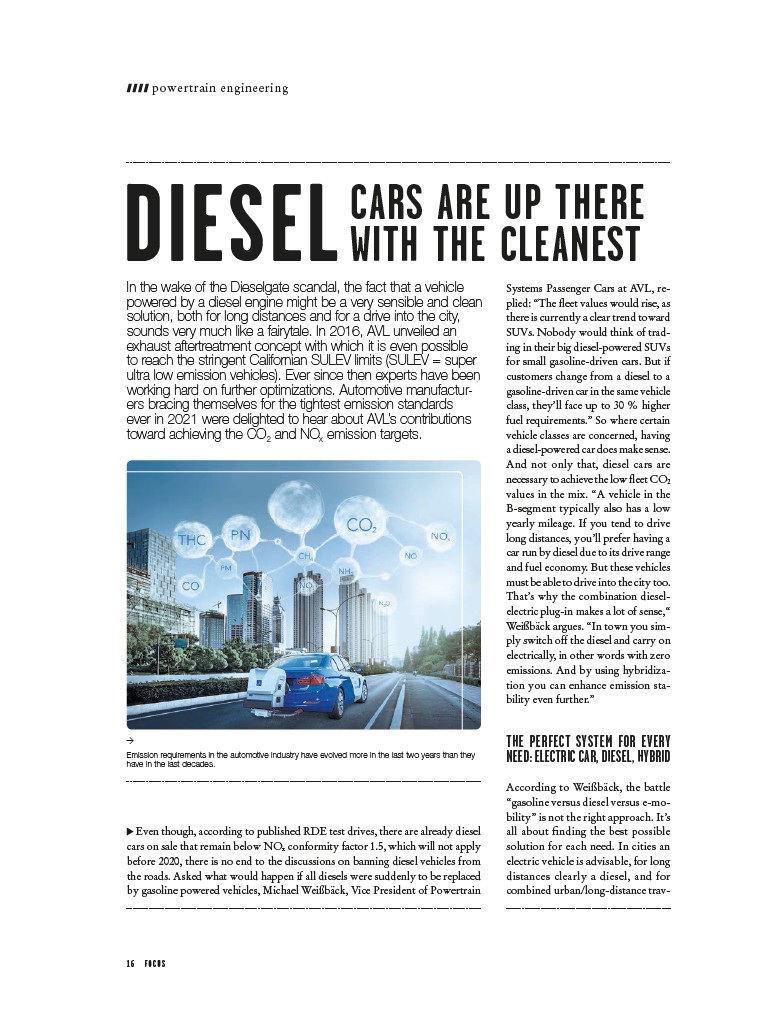
powertrain engineering
DIESEL CARS ARE UP THERE
WITH THE CLEANEST
Even though, according to published RDE test drives, there are already diesel
cars on sale that remain below NOx conformity factor 1.5, which will not apply
before 2020, there is no end to the discussions on banning diesel vehicles from
the roads. Asked what would happen if all diesels were suddenly to be replaced
by gasoline powered vehicles, Michael Weißbäck, Vice President of Powertrain
1 6 F O C U S
Systems Passenger Cars at AVL, replied:
“The fleet values would rise, as
there is currently a clear trend toward
SUVs. Nobody would think of trading
in their big diesel-powered SUVs
for small gasoline-driven cars. But if
customers change from a diesel to a
gasoline-driven car in the same vehicle
class, they’ll face up to 30 % higher
fuel requirements.” So where certain
vehicle classes are concerned, having
a diesel-powered car does make sense.
And not only that, diesel cars are
necessary to achieve the low fleet CO2
values in the mix. “A vehicle in the
B-segment typically also has a low
yearly mileage. If you tend to drive
long distances, you’ll prefer having a
car run by diesel due to its drive range
and fuel economy. But these vehicles
must be able to drive into the city too.
That’s why the combination dieselelectric
plug-in makes a lot of sense,“
Weißbäck argues. “In town you simply
switch off the diesel and carry on
electrically, in other words with zero
emissions. And by using hybridization
you can enhance emission stability
even further.”
THE PERFECT SYSTEM FOR EVERY
NEED: ELECTRIC CAR, DIESEL, HYBRID
According to Weißbäck, the battle
“gasoline versus diesel versus e-mobility”
is not the right approach. It’s
all about finding the best possible
solution for each need. In cities an
electric vehicle is advisable, for long
distances clearly a diesel, and for
combined urban/long-distance trav-
In the wake of the Dieselgate scandal, the fact that a vehicle
powered by a diesel engine might be a very sensible and clean
solution, both for long distances and for a drive into the city,
sounds very much like a fairytale. In 2016, AVL unveiled an
exhaust aftertreatment concept with which it is even possible
to reach the stringent Californian SULEV limits (SULEV = super
ultra low emission vehicles). Ever since then experts have been
working hard on further optimizations. Automotive manufacturers
bracing themselves for the tightest emission standards
ever in 2021 were delighted to hear about AVL’s contributions
toward achieving the CO2 and NOx emission targets.
>
Emission requirements in the automotive industry have evolved more in the last two years than they
have in the last decades.